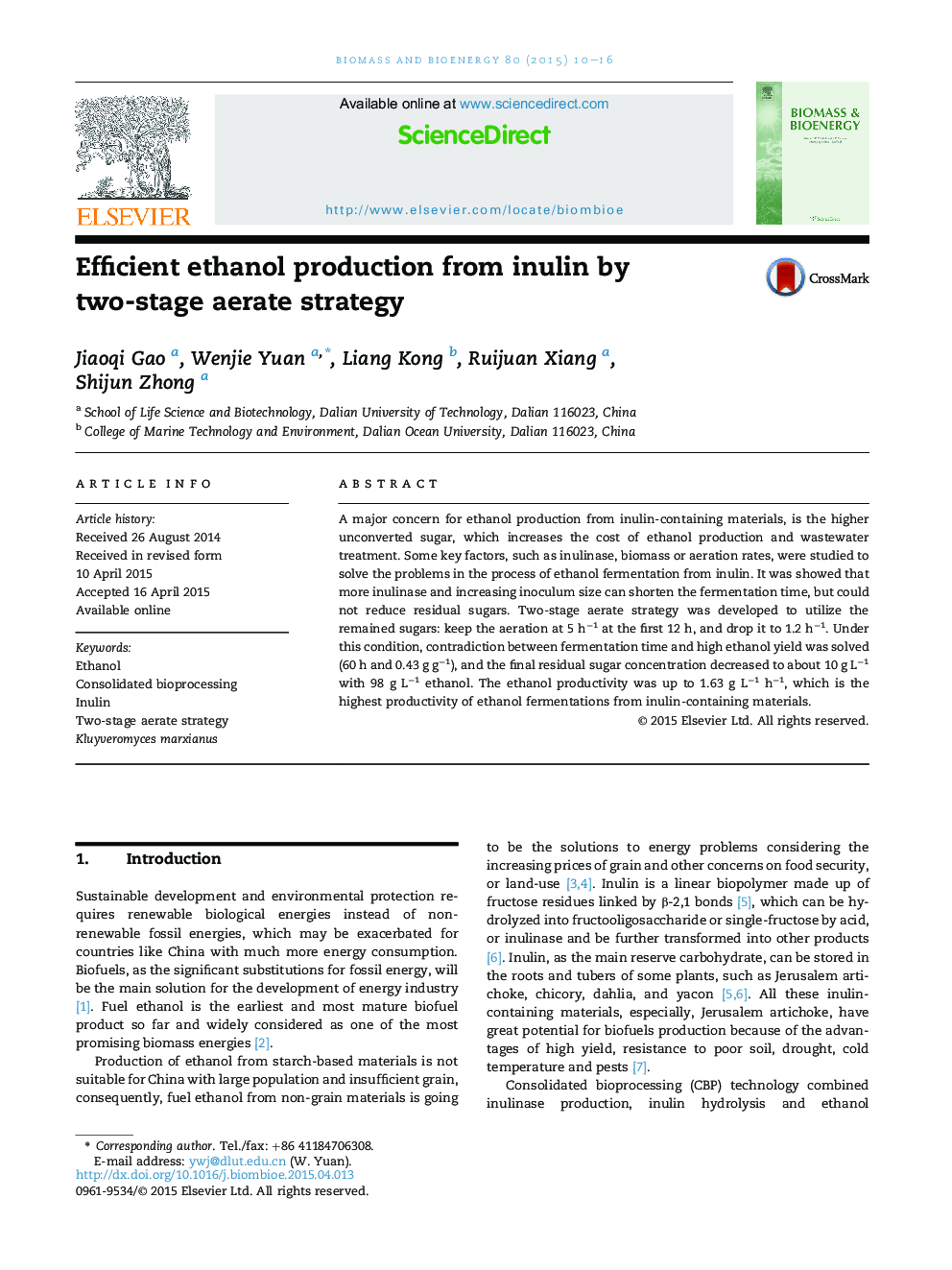| Article ID | Journal | Published Year | Pages | File Type |
|---|---|---|---|---|
| 7063787 | Biomass and Bioenergy | 2015 | 7 Pages |
Abstract
A major concern for ethanol production from inulin-containing materials, is the higher unconverted sugar, which increases the cost of ethanol production and wastewater treatment. Some key factors, such as inulinase, biomass or aeration rates, were studied to solve the problems in the process of ethanol fermentation from inulin. It was showed that more inulinase and increasing inoculum size can shorten the fermentation time, but could not reduce residual sugars. Two-stage aerate strategy was developed to utilize the remained sugars: keep the aeration at 5 hâ1 at the first 12 h, and drop it to 1.2 hâ1. Under this condition, contradiction between fermentation time and high ethanol yield was solved (60 h and 0.43 g gâ1), and the final residual sugar concentration decreased to about 10 g Lâ1 with 98 g Lâ1 ethanol. The ethanol productivity was up to 1.63 g Lâ1 hâ1, which is the highest productivity of ethanol fermentations from inulin-containing materials.
Related Topics
Physical Sciences and Engineering
Chemical Engineering
Process Chemistry and Technology
Authors
Jiaoqi Gao, Wenjie Yuan, Liang Kong, Ruijuan Xiang, Shijun Zhong,
